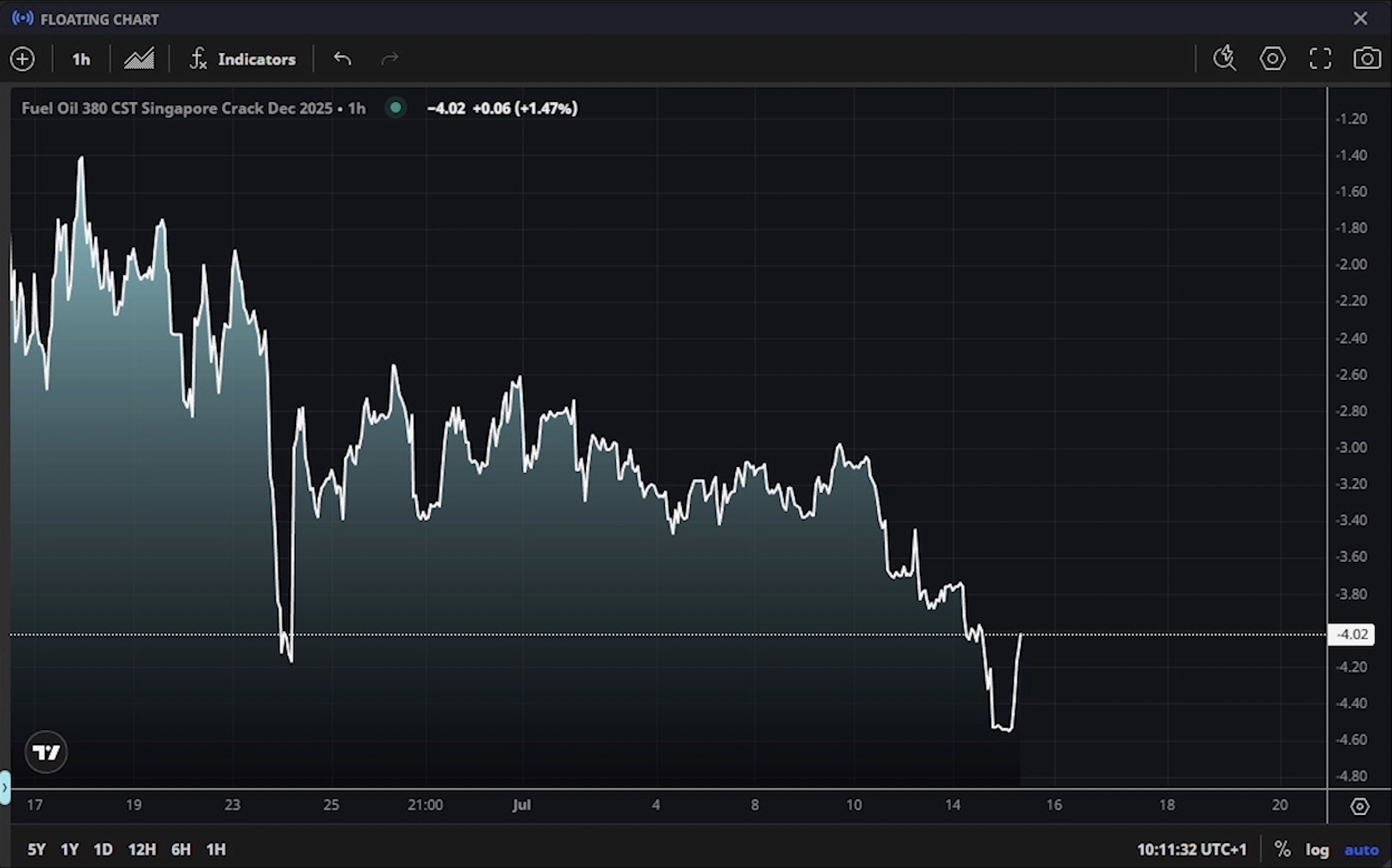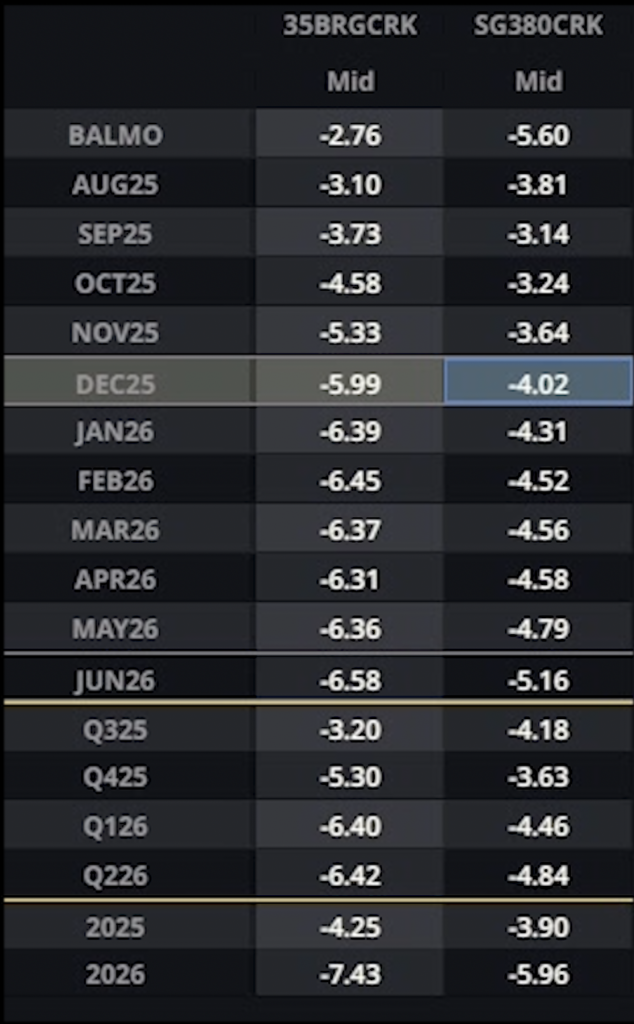Overview: From Summer Strength to Structural Weakness
After a sustained period of bullish momentum, the High Sulfur Fuel Oil (HSFO) market—particularly in Asia—is now showing signs of strain. June’s rally, underpinned by tightness and seasonal strength, appears to be giving way to a growing physical surplus, especially in the Singapore region. This shift marks the beginning of what may be an extended period of price softness, as the cracks begin to reflect oversupply fundamentals.
Flux analysts at Onyx Markets have identified a clear breakdown in trend, with deferred 380cst cracks (specifically the Dec 2025 Singapore 380 Crack) now exhibiting a downward channel. Unlike prior strategies that required contrarian positioning, today’s setup aligns with an established bear trend—offering a more comfortable, momentum-based short opportunity.

Source: Flux / flux.live
Physical and Technical Drivers of Weakness
Inventory Overhang in Singapore
- Stocks of high sulfur residual fuel oil are building in the key trading hub of Singapore.
- The market is struggling to clear cargoes efficiently, contributing to downward pressure on prompt values.
Cracks Reflecting Regional Disparity
- European cracks have shown early signs of weakness, but the recent divergence in Singapore makes a short on the Singapore 380 crack more compelling.
- Deferred cracks, such as Dec 25, are showing a pattern of consistent lower highs and lower lows.
Clear Downtrend Establishing Itself
- Technically, the Dec 25 380 crack has been trending down since before July.
- The structure suggests further downside potential, with historical analogues showing moves of $3–4 from similar levels during prior weak phases.
Market Sentiment: Turning Bearish on Deferred HSFO
Traders are increasingly taking note of the growing oversupply and responding by:
- Reducing long positions held through the summer rally.
- Shifting preference from near-term bullish calendar spreads to longer-term bearish crack structures.
- Positioning for a continued slide in deferred cracks as fundamentals reassert themselves.
This has opened the door for clear setups with defined risk and asymmetric reward.

Source: Flux / flux.live
Trade Idea: Short Dec 25 Singapore 380 Crack
Trade Setup:
- Entry Level: Around -4.00 (USD/bbl)
- Stop Loss: -3.00 (risking $1 per barrel)
- Target:-6.00 to -7.00, offering a 2:1 or better risk/reward
- Size: 1,000 barrels (standard $1,000 risk with $1 per barrel stop)

Source: Flux / flux.live
Note that the contract size for this product is 100mt, and it is priced in $/bbl. The mt:bbl conversion ratio is 6.35 for Sing 380. This means a trade of 1 lot would have a tick value of $6.35 per $0.01 movement in the price, as opposed to $1 per $0.01 if the lot size and pricing unit were both in bbl or both in mt.
As a result, a trade size of 1.57 lots gives a trade size of approximately 1,000 bbl, 997 to be precise.
Why:
- A $1 stop sits just above recent resistance near -3.00, offering clean technical containment.
- The Dec 25 crack continues to trade in a defined downtrend.
The setup allows for:
- Trailing stops once the trade is in profit (e.g., move stop to entry after a $1.50 gain).
- Scaling in with an additional 1,000 barrels if price action confirms breakdown below -5.50.
- Preserving original risk structure by maintaining a $1 stop above each new entry level.
Tactical Advantages:
- The long-dated nature of the Dec 25 contract allows time for the fundamental oversupply to play out.
- Low correlation with prompt volatility avoids the noise of short-term shipping or weather disruptions.
- Allows for discretionary size increases once downside momentum is confirmed.
Conclusion
Short-term strength in Gasoil is likely to persist—at least through the current weather-driven cycle—but we may be approaching a local top. Whether you’re hedging fuel costs, exploring biofuel exposure, or considering a reversion play on deferred cracks, the current market offers a range of opportunities. A flexible strategy that accounts for both upside potential and tactical shorts could be prudent given prevailing uncertainty
CFDs and spread bets are complex instruments and come with a high risk of losing money rapidly due to leverage. The vast majority of retail client accounts lose money when trading in CFDs and spread bets. You should consider whether you understand how CFDs and spread bets work and whether you can afford to take the high risk of losing your money.
